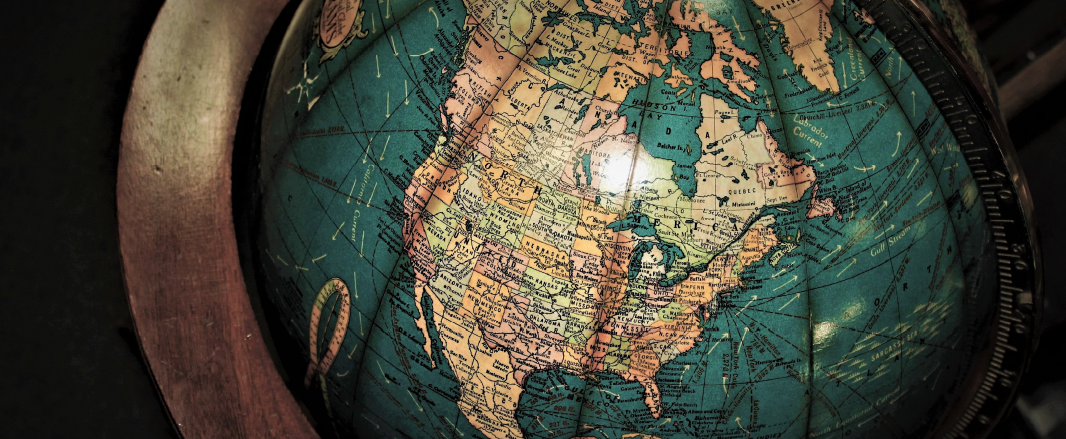Introduction
If anyone thought that the so-called Fourth Industrial Revolution, also known as “Industry 4.0,” which we have found ourselves in would not have its own particular dose of “cold war” and confrontation, we fear that they were sadly misguided. China and the USA are now caught up in this new version of intense and unstable relations happening in an environment comprised of 5G, artificial intelligence, the quantum Internet, and automation.
The USA stands against a millennium China in historical terms, but also a very young nation in terms of its presence on the international stage. China and the USA are the only countries in the world that are competing over the leadership of this new era, backed up by their extreme economic and military power. They are also the only global players that have sufficient resources and the capacity to offer global public goods and push through projects of a planetwide nature.
As in any geostrategic conflict, there are very concrete scenarios where this confrontation can be clearly seen and Latin America has undoubtedly become one of the places where the confrontation becomes clear.
Considered to be America’s natural sphere of influence since the era of the “Monroe doctrine” (America for the Americans,) the USA has seen how its global rival China has taken over spaces in Latin America since the start of this 21st Century. China has conquered certain regions, and other times the USA has surrendered them, leading China to become one of the key players in the region.
In light of this position, what should Latin America do? Hand itself over to one of the great superpowers? Offer its raw materials to the highest bidder, in exchange for modernizing its infrastructure, access to education, and vaccines? Is now the right time to apply the maxim, “Prosperity from China and security from the USA?”
Let’s not kid ourselves. The aim of these superpowers has always been, and will continue to be, a search for influence. Although in the past they primarily utilized politics and ideology, they have now moved to the fields of trade, finance, and research.
Although the pressure is intense, and the promised benefits are great, Latin America does not need to hand itself over to one of the two powers to leverage its development. Instead of this black-and-white approach, consider another possibility, a “third route,” which has its roots in the very history of Latin America, its culture, and its values – Europe. Europe always offers its support to the region with which it shares principles and which together form part of the “Western world” in terms of its way of life and social aspirations.
Could Europe be the alternative for a Latin America faced with this scenario of Chinese and American domination?
This document seeks to outline some key elements to understand this new situation facing Latin America in its relations with two great global powers. Additionally we will address the major opportunity for the European Union to step forward and offer itself as the most valid option for a region that is manifestly “Euro-compatible”.


“The aim of these superpowers has always been, and will continue to be, a search for influence”
The Powers and Latin America
Since the start of the 21st Century, China has stepped up its economic and political presence in Latin America, which is being viewed with increasing concern by the USA, the regions’ traditional ally. The United States has traditionally played a dual role of “supporter and guardian”, depending on the occasion, a position which is now threatened by China’s rising influence.
The USA continues to be the region’s largest trading partner, although China is now in second place. From 2002 to 2019, the participation of the USA in the region’s trade has dropped, falling from the destination for 57% of exports to 43%, while imports have fallen from 46% to 32%. However China is experiencing an opposite trend, with sustained growth. While exports to China in 2002 only amounted to 2% of total exports, by 2019 this had risen to 12%. Imports have followed a similar trend, with imports to the region from China rising from 4% to 18% in the same period.
The trade trend is clear, and the financial trends have followed accordingly. China has become the region’s biggest lender. It is calculated that between 2005 and 2018, China lent some 150 billion dollars to Latin America. A significant development was when China joined the Inter-American Development Bank (IDB) in 2009, with a donation of 350 million dollars. Similarly, the two Chinese international development banks – the Asian Infrastructure Investment Bank (AIIB), with headquarters in Beijing, and the New Development Bank (NDB), headquartered in Shanghai, have stepped up their presence in the region.
One of the most striking aspects for analysts is the qualitative change in relations between China and Latin America. Although at the outset, actions by China were aimed at harnessing trade opportunities or one-off financial operations, from 2013 onward it was driven by governmental policy. Latin America joined the regions that qualified under the “Belt and Road Initiative” – the ambitious strategy launched by President Xi Jinping to expand infrastructure and investment projects around the world.
It is against this backdrop that two attractive sectors have been defined for Chinese investment in Latin America – transport and energy. Some significant examples include the Chinese transcontinental railway project that will connect the Pacific coast in Peru with the Atlantic coast in Brazil, crossing through Bolivia. In the energy sector, there is a noteworthy presence of the Chinese State enterprises State Grid and Three Gorges in electricity grids, power plants, and wind farms located in Chile, Brazil, Ecuador, Bolivia and Peru.
“It is against this backdrop that two attractive sectors have been defined for Chinese investment in Latin America – transport and energy”

And how does Washington feel about all this?
Under the Trump Administration, the attitude of the USA towards its southern neighbors could not have been more cavalier. This is the first time in recent history that a President of the United States has not attended a Summit of the Americas; the only visit President Trump made to the region was in 2018, to the G-20 Summit in Buenos Aires. With this attitude from Latin America’s main ally and partner, it follows that most of the Latin American countries are considering China instead as a source of unbeatable financing, advantageous contracts, and unconditional support.
It was only in the second half of his term of that the Trump Administration began to react more belligerently, and both the President and the Secretary for State, Mike Pompeo, repeatedly expressed their rejection of Chinese activities in Latin America. They even described them as “predatory economic activities”, and “vile actions” in the region.
The USA launched the “America Grows” program, a North American initiative begun in 2018 with the goal of counteracting the Chinese Belt and Road Initiative with the presence of the U.S. International Development Finance Corp. to promote private investment in the region. Ivanka Trump went to Paraguay to launch the aid program of the U.S. Overseas Private Investment Corp. to show a personal investment in the region.
Under the Biden Administration, the rhetoric against the presence of China in Latin America has been maintained, although we can appreciate that Biden is more knowledgeable about the region. In his position as Vice-President, Joe Biden had the chance to visit the region 16 times, leaving behind a legacy of projects, alliances, and agreements that will probably be maintained.
In his recent visit to Europe in 2021 to attend the G7 Summit, President Biden made it very clear that his main concern on the international stage at this time is undoubtedly China. It comes as no surprise that China was mentioned three times in the G7 Final Communiqué and was even included in the NATO Resolution that the US President attended after the G7 Summit.
New turn in relations
2020 could be called a new turning point in relations between the superpowers and Latin America. According to Boston University and the US NGO Inter-American Dialogue, for the first time in 15 years, China did not make a single loan to any Latin American country in 2020. Instead, Chinese companies stepped up their investments in infrastructures, particularly in the field of electricity distribution, and the demand for raw materials has continued to increase. This indicates that there has not been a genuine deceleration, since relations between the two regions are now too close for any major change of course to take place. However, it seems that China is reformulating direct investment.
This new approach also coincides with the introduction of a much more selective Chinese expansion strategy from 2017, which has started to be implemented several years on. The creation of the Digital Silk Road and the Health Silk Road, both headed up by Chinese private corporations, have started to come into play accelerated by the outbreak of the COVID-19 pandemic.
The consequences of the pandemic on Latin America (the human tragedy, the polarization of projects, the fiscal deficit, high levels of indebtedness, and the difficulties to repaying them) are truly significant, and we still need more time to properly evaluate them. This has meant that some countries have been unable to receive new loans on a large scale. In fact, two of the main countries in debt to China in Latin America, Venezuela and Ecuador, have had to restructure their debts in recent years.
Beijing has taken advantage of the health crisis to take on a more important role in Latin America. When the health emergency broke out China started cooperating, through its Health Silk Road program, with all the countries in the region. They provided face masks and primary need health products. China also offered its own vaccine – Sinovac – to several countries, like Chile, where it has been one of the most widely used vaccines. This is “vaccine diplomacy” in its purest form.
The USA has also been supporting the region in these difficult times. Large shipments of vaccines have been sent by the UN Administration to many countries in the region however the supply of vaccines has been sent very gradually. The USA’s political focus remains entrenched in the migratory problem, so it’s support has not been flaunted in the same way as China’s.
The influence of these superpowers has changed further with this backdrop. At the time that President Trump declined to take part in the Summit of the Americas, China inaugurated its new space base in Argentina, a macro-project that shows the economic and strategic potential of this region for China.
“Beijing has taken advantage of the health crisis to take on a more important role in Latin America”

In a search of gains
Why is China investing so much in a region that is as culturally and socially distant as Latin America? China is clearly seeking to ensure that its trade, financial, and cooperative presence leads to political gains.
We have a model example: a series of 12 Latin American countries had no formal relations with China, since they recognized Taiwan as a legitimate country. Over the last four years, the Dominican Republic, El Salvador, and Panama have changed their recognition of Taiwan to court China. Achieving this kind of alliance in Latin America offers Beijing powerful votes before the United Nations (UN) and the backing of Chinese appointments on multilateral institutions.
However, the spectacular growth of trade relations and investment by China in Latin America and the Caribbean has still not translated into a significant expansion of Beijing’s influence on media and civil society in the region. While it is true that China has introduced a great many initiatives to enhance its influence, this Chinese offensive on the media, information, and civil society has not yielded the same level of influence. Beijing’s approach to enhancing its soft power in the region remains unclear.
The Latin American reaction
The best word to define China’s presence in Latin America would be “pragmatic”. China’s activity seeks to cover a series of deficits that have not been adequately addressed by its rival superpower, either due to a change of priorities, a lack of strategic sense, or an undeniable lack of interest.
In this regard, China offers Latin American countries a forum for trade, investment, and cooperation. These benefits come not just at a state level, but also directly tied into its universities, public enterprises, and more importantly, Chinese provinces themselves. This web of relations is noteworthy in its permanence in the medium and long term.
How do Latin American countries react? As is only natural, when you do not have a budget to pay for your own infrastructures, you accept a good degree compromise and interference from a larger economic power. This comes in the form of financing, an investment to implement a key project for the economy of a country, or access to millions of vaccines.
This is how Venezuela, Argentina, and Brazil have reacted as the main destinations for Chinese loans, along with Chile, to the generous Chinese purchase of its copper, Brazil with its iron, Bolivia with its tin, or Peru with its gold, and Venezuela and Ecuador with their oil.

Europe’s time has come
It is clear to see that China has arrived in Latin America and it has here to stay.
However, from our perspective, it is this “triangular” China-LatAm-USA design that is insufficient to define the geostrategic map of relations between Latin America and the main superpowers. This model lacks a vertex – where where is the European Union in this model, and what is its relations with Latin America?
According to José Manuel Albares, who was Spain’s Ambassador in Paris and now the Minister for Foreign Affairs of Spain, the presence of the European Union in Latin America is inevitable and must be understood. There is no more “Euro-compatible” region than Latin America. That compatibility not only needs to be based on key elements from the past which play a fundamental role, such as the shared origin of the population or the use of common languages (both Spanish and Portuguese) but also thinking about future elements. In this regard, we refer to how Latin America and Europe address and understand the world, sharing the same values, the same beliefs in a rule-based world order, in multilateralism, in free trade, in the peaceful resolution of conflicts, and in many other values and aims that strengthen this compatibility.
Despite the fact that the common agenda between Latin America and European nations is more than clear, the European Union has traditionally focused on regions where major geostrategic conflicts prevail. For better or worse, such conflicts have not taken place in Latin America, and therefore Europe’s interest has remained somewhat diluted.
It is surprising, against this backdrop of intense relations, common values, and shared objectives, that the European Union has not maintained its annual summits between the two regions. The last formal EU-CELAC Summit took place in 2015 and they haven’t held even high-level monitoring meetings. The slowdown in the ratification of the MERCOSUR Agreement is set against this backdrop, along with the lack of progress in the renewal of the agreements with Mexico and Chile.
For the European Union, China’s presence in Latin America should not be a cause for concern, but rather an opportunity that also contributes to the development of Latin American peoples. However, Europeans will have to decide when to view China as a genuine “partner” that can be trusted and with which it can cooperate and when it is a “systemic competitor” with a different vision from Europe’s in such fields as human rights in general, social rights in particular, and environmental respect.
The European Union must actively involve itself with Latin America and play a leading role in its relations, as already happens in the fields of cooperation, investments, and agreements between the EU and Latin American countries. European instruments already exist, ready to be employed, such as the “Advanced Cooperation Strategy,” in line with the recent European Consensus on Development. In this strategy cooperation is viewed as not just a traditional development aid, but a possibility with all countries, not just qualified countries, each with its own specific features.
This is not the perception of European involvement among Latin Americans. The activity of the European Commission Delegations in the main Latin American capitals is relatively unknown at a general level, even by the governing elite. Boosting its positioning, its presence, and announcing what it does, since it is involved in many fields, would help its visibility.
Now more than ever, the European Union has found a space in Latin America, offering credibility and confidence, highlighting its experience in social cohesion and its capacity to influence political change. The EU has the ability to influence constituents directly which could influence many of the political changes that are taking place in the heart of Latin American societies.
At this trying time in Latin America, now is the right time for its historical partner in the West, with its common values and shared goals, to take a step forward and become a real alternative to the existing binary options. This would be the “third route,” and alliance with Europe, that could be chosen by the Latin American people.
“It is this ‘triangular’ China-LatAm-USA design that is insufficient to define the geostrategic map of relations between Latin America and the main superpowers”
Authors
Claudio Vallejo



